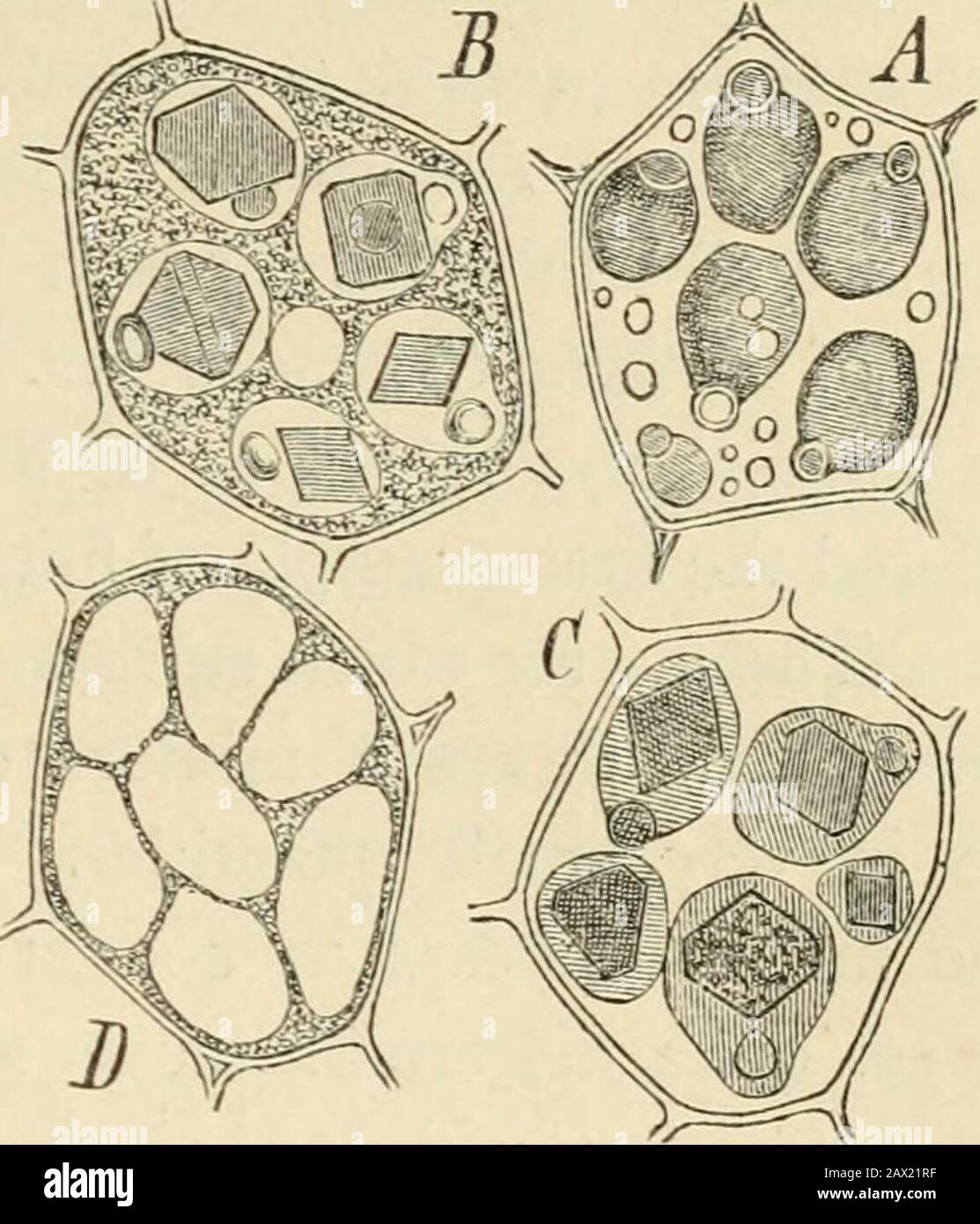Text-book of botany, morphological and physiological . s by action of the sulphuric acid; m empty spaces from which the aleurone-grains have been dissolved (x8oo). homogeneous matrix, which, as closer investigation shows, consists, according to theoiliness of the seed, of more or less oil combined with albuminoids. The grainsthemselves, on the other hand, consist, independently of certain enclosed matters,of albuminoids. In the grains of aleurone the albuminoid must be distinguished from the en-closed substances. The latter are either crystals of calcium oxalate, or they arenon-crystalline, ro

Image details
Contributor:
The Reading Room / Alamy Stock PhotoImage ID:
2AX21RFFile size:
7.1 MB (324.5 KB Compressed download)Releases:
Model - no | Property - noDo I need a release?Dimensions:
1463 x 1708 px | 24.8 x 28.9 cm | 9.8 x 11.4 inches | 150dpiMore information:
This image is a public domain image, which means either that copyright has expired in the image or the copyright holder has waived their copyright. Alamy charges you a fee for access to the high resolution copy of the image.
This image could have imperfections as it’s either historical or reportage.
Text-book of botany, morphological and physiological . s by action of the sulphuric acid; m empty spaces from which the aleurone-grains have been dissolved (x8oo). homogeneous matrix, which, as closer investigation shows, consists, according to theoiliness of the seed, of more or less oil combined with albuminoids. The grainsthemselves, on the other hand, consist, independently of certain enclosed matters, of albuminoids. In the grains of aleurone the albuminoid must be distinguished from the en-closed substances. The latter are either crystals of calcium oxalate, or they arenon-crystalline, roundish, or clustered granules. Globoids. These are a doublecalcium and magnesium phosphate, in which the latter is greatly in excess. account of his labours for my use here ; what I have said above follows his views tolerablyclosely. There is, in fact, scarcely any one who combines, to the same extent as Dr. Pfeffer, the necessary skill in microscopic work with the chemical knowledge required in this excessivelydifficult work. I GRAINS OF ALEURONE. 53. Fig. 50.—Cells from the &ndo%ptrm oiRtcinus com-mtifiis (xSoo). A fresh, in thick glycerine, B indilute glycerine, C wanned in glycerine, D after treat-ment with alcohol and iodine, the aleurone grains aredestroyed by sulphuric acid, the albuminoid remainingbehind as a net-work. In the aleurone-grains thegloboid may be recognised, and in (B, C) the crjstal-loid. The whole albuminous mass (proteine) is now amorphous, and in that case notdoubly refractive; or the greater part is developed into the shape of a crystalloid(sect. 7), which, together with the enclosed substances already named, is surroundedby a sparse amorphous envelope, constituting, together with the former, the grain of aleurone.(Fig. 50.) The crystalloids are all insoluble in water;neither alcohol nor water extracts anything fromthem. The grains destitute of crystalloids dis-solve in water entirely (as Pseonia), partially (asLupinus), or not all (as Cynoglossum). Bu